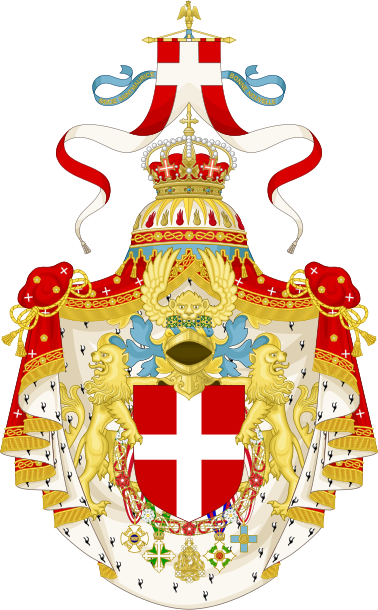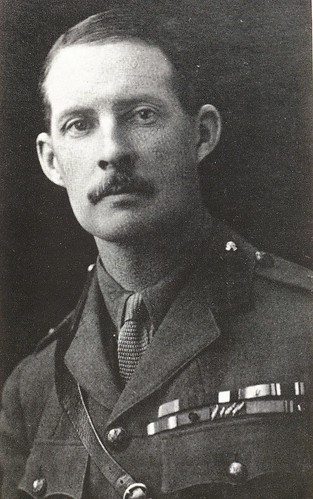 Eight dozen years ago today, the Kingdom of Italy declared war on Austria-Hungary.
Eight dozen years ago today, the Kingdom of Italy declared war on Austria-Hungary.
Monday, May 23, 2011
Habsburg vs. Savoy
Posted by
J.K. Baltzersen
at
10:11 AM
![]()
![]()
Labels: military intervention, short note
Subscribe to:
Post Comments (Atom)





3 comments:
dear sir or madam,
please notice that, according to the license, if you want to use my files, you must mention my authorship.
yours faithfully,
Katepanomegas
Dear Sir or Madam:
Thank you for your notice, and thank you for all the works you are making available.
Please note that first of all the graphic is not hosted on my blog. Technically, it is not there. It is on the Wikipedia server. When one until just recently clicked on the graphic on this blog post, one would end up viewing the graphic at the Wikipedia server.
In general, when there is a photographer, artist, etc. listed on the Wikipedia page and the copyright has not expired, I link to the Wikipedia graphic information page. I may do so even when it has expired. In this way, visitors to my blog can see the creator information by clicking on the graphic. If I have information on the real name of the creator of the photo, painting, etc., I generally include the name in the alt tag. I generally do so even when the copyright has expired, as it is good practice to credit the creator even though I need no permission of any use of it.
Sometimes, I link to the Wikipedia article that contains the graphic instead. If the copyright has expired or I do not recognize any copyright, I may link to the graphic itself, as I did in this case.
When it comes to digital representations of coats of arms, one cannot claim copyright to them. That would be tantamount to my creating a correct digital representation of, e.g., the American flag and claiming copyright to the American flag. This is obviously out of order. If anyone could claim any sort of ownership to this particular coat of arms, it would be the House of Savoy, alternatively the "Republic of Italy."
If the standard terms of copyright were to be applied to this particular coat of arms, the original creator must have lived at least until 1941 for the copyright not to have expired when this blog post was published. If he were 20 years old in 1890, and that is almost as young as he could have been, he would be 71 in 1841. Some countries don't even recognize copyright for graphics this old.
If it were a work of art or a photograph of a coat of arms or some other derivative work (an exact digital representation is not a derivative work), it would of course be different. If the creator of this work, claimed it was his interpretation of the coat of arms in question, it could pass as some sort of derivative work, but as long as it represented that it is the coat of arms in quesiton, no originality is claimed, and it is not a derivative work.
It would also be different if it were some coat of arms of one's own. This is why I have asked the Kuehnelt-Leddihn family for permission to run the Kuehnelt-Leddihn family crest on my blog.
(In the Wikimedia community the issue of copyright on exact digital representations of coats of arms is contested. See the discussion here.)
That being said, I agree that it would be a good practice of courtesy to give credit to the person who has put down work in creating the digital representation. It is especially so when the creator apparently is behind so many digital representations as it is in this case. This is a great service to us all. It is then so done.
I do, however, not quite understand the point when one is giving credit to something that apparently is not a real name.
I have now linked to the graphic's information page at Wikipedia -- instead of the graphic itself. This should satisfy both the claimed license (I am not interested in any lengthy discussion on copyright at this weblog) to an official coat of arms and normal good practice of giving due credit. Please also note that this comment also constitutes recognizing the creator of the digital representation.
It is indeed just about courtesy; I'm perfectly pleased with the link solution.
For the copyright issue, the traditionnal position in my country is that the definition of a CoA (the blazon) cannot be copyrighted, but its material (and I would humbly say artistic) representation can, as any other intellectual creation. In fact, I usually don't do exact reproduction of the original and official drawing. I find this as totally uninteresting as pushing the button of the copy machine. I almost always find 19th century heraldry gross and lacking of elegance and simplicity. With my modest means and abilities, I try to make drawings both respectful to the legal blazon and to the original spirit of heraldry : I therefore prefere clear and easily identifiable colours, simpler design, large ordinaries covering all the shield surface and not floating on the field with empty space on the sides. I also correct the original depictions when I find differences with the legal text of the blazon. On the current example, the law says a torse should be added on the helm, but it is not present on the 1890 depiction.
If you compare the 1890 drawing and mine, they of course share a lot, but they cannot be described as identical.
As for the naming issue, almost no one knows Stalin as Iossif Vissarionovitch Djougachvili; for me it's asame : I'm known as katepanomegas, that's my "graphic dictator name".
These are just explanations of my comment, not a critic against your answer, which I found, again, fully satisfactory.
Post a Comment